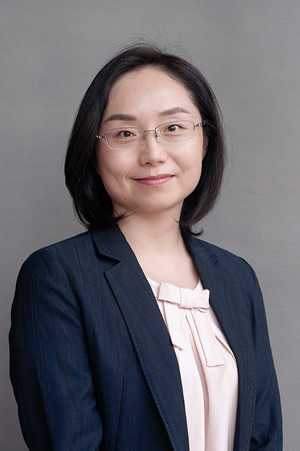Dr. Ling-Ling ChenBy Dr. Nik Tsotakos  Dr. Ling-Ling Chen is a Principal Investigator at the CAS Center for Excellence in Molecular Cell Science and the Associate Director of the State Key Laboratory of Molecular Biology at the Shanghai Institute of Biochemistry and Cell Biology (SIBCB). She has been recognized with a number of honors and awards, including the HHMI Interational Research Scholar in 2017 and the Young Investigator Award of the Chinese Academy of Sciences in 2018. Dr. Chen received her PhD from the Univesity of Connecticut Health, working with Dr. Gordon Carmichael, and completed an MBA at UConn Business School at the same time. While the Carmichael lab had studied the polyomavirus life cycle and RNA processing editing and function, Dr. Chen recalled “Gordon was always positive and enthusiastic for science, which had greatly inspired me to explore new directions in his lab. This had allowed me to discover Alu element-mediated gene silencing and NEAT1-organized paraspeckle formation and sequestration of a subset of IRAlus-containing mRNAs in paraspeckles. Gordon was also encouraging and supportive to his trainees, not only in daily lab work, but also beyond the research. For example, when I wanted to pursue a second degree in business school, he encouraged me to benefit the most from the education. It turned out that working hard in the lab while completing an MBA degree in a total of 4.5 years at UConn Health kept me crazily fulfilled. Importantly, this unique experience has trained me to acquire a ‘can-do attitude.’” Dr. Chen has long been interested in the role of circular and long non-coding RNAs in normal cellular function and disease. She considers them as very important regulators of gene expression. She said, “ncRNAs can modulate chromatin status and nuclear condensates, regulate cytoplasmic mRNA stability, interfere with translation, modulate signal transduction pathways and so on, yet there is so much more to learn about them— the characteristics of each class of long noncoding RNAs and circular RNAs are still under appreciated.” She continued, “We find that many circular RNAs have unique structures that allow them to bind and regulate the innate immune dsRNA receptor Protein Kinase R (PKR). Misregulation of this process is found in patients with autoimmune diseases. Furthermore, introduction of certain circRNAs can dampen autoimmunity associated with lupus. These observations suggest an intriguing possibility that circular RNAs can act as a new type of therapeutic strategy.” This takes a lot of hard work and method optimization, which comes with its own challenges. She said, “We are working hard towards this direction by linking the circular RNA-PKR axis to other autoimmune diseases, and optimizing different methods for in vivo and in vitro synthesis and delivery of circular RNAs with correct structure but without immunogenicity. I hope that these efforts will allow us to better appreciate circular RNA function as well as their application potential.”
Her current challenge seems to fascinate her as well. She said, “Although it is attractive to see that circular RNAs are broadly expressed and have functional potential, we ultimately want to learn what do they do in cells and in vivo. However, because they are expressed with cognate linear transcripts and have unique structural features, one biggest challenge is developing methods to study these RNA circles without affecting their resident genes both genetically and biochemically. With these efforts on characterizing circular RNAs, we hope more interesting and important physiological roles of circular RNAs will be uncovered.” With regards to personal challenges of the COVID-19 pandemic, she found it difficult to “balance time spent on family and work when everything was locked down. With the re-opening of my kid’s kindergarten (kind of), I can spend more time in the lab and try to regain lab activities with all lab members.” Her advice for trainees in RNA research is simple: “Focus on the topics that you are interested in and work hard with persistence and passion. Ideas are important, but skills and methods to test your ideas are also critical.” This echoes the advice she once received from Dr. Carmichael. “I think the most important advice that Gordon had given to me was to explore the best I possibly could do.” She also encourages trainees to attend meetings, such as the annual RNA Society Meeting. “My interest in a research career in RNA Biology was indeed greatly stimulated by my very first attendance at the RNA Society Meeting in 2007 (in Madison, Wisconsin). In addition to its scientific excellence and broad coverage of areas of RNA biology, I was impressed by its openness to female scientists and the great support of junior scientists. I still recall the pleasant moment when I was sitting in a lunch mentor-mentee table with Drs. Douglas Black and Saba Valadkhan and became inspired by our conversations on the pathway to be an independent PI.” Dr. Chen’s favorite RNA is, unsurprisingly, “circular RNA. Its unusual format and life cycle have brought many new ways in gene regulation and possibilities in translational potential.” While Dr. Chen is not on social media, you can visit her lab webpage at http://www.chenlab-ncrna.com/, or e-mail her at [email protected]. |
